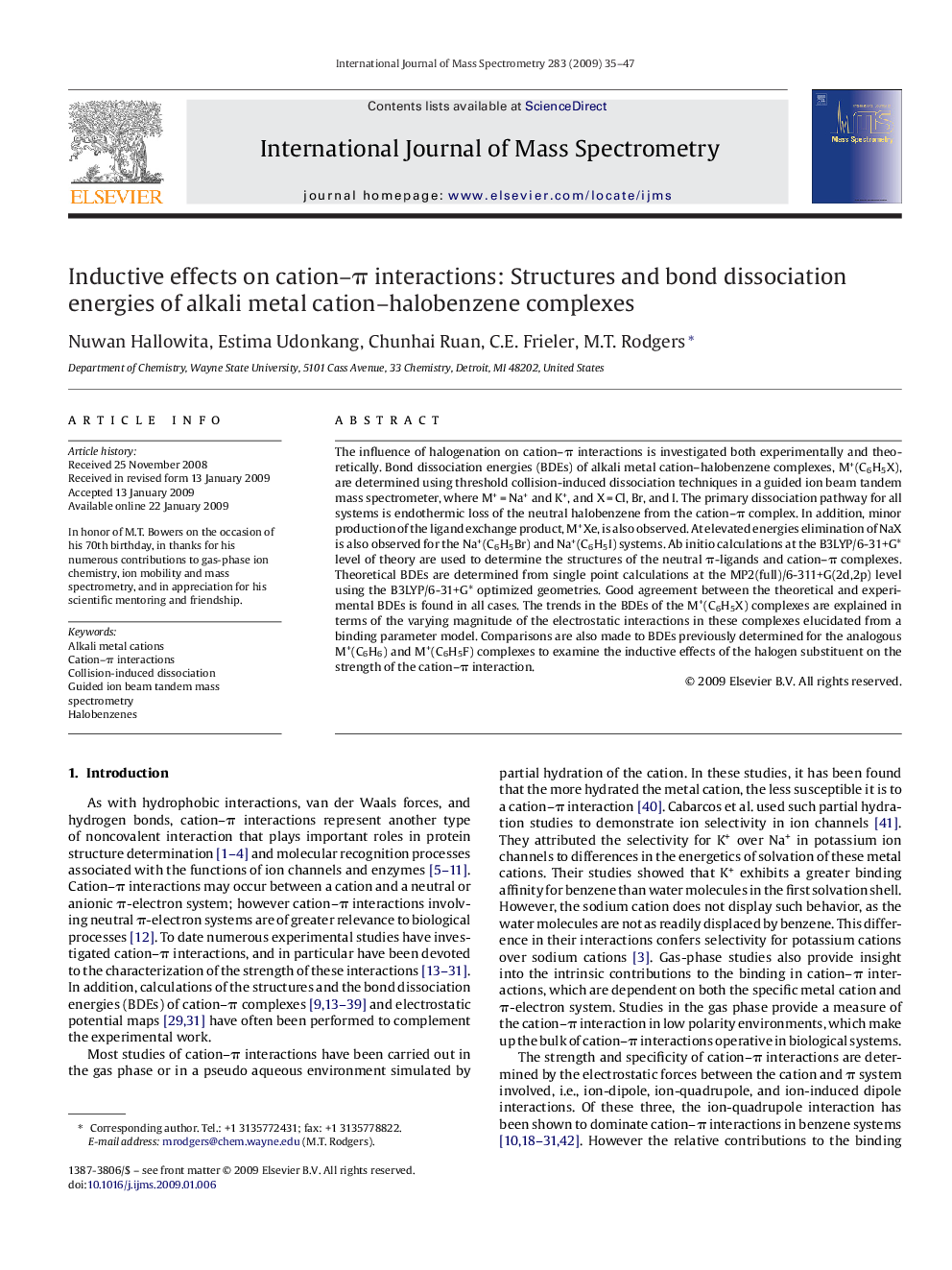| Article ID | Journal | Published Year | Pages | File Type |
|---|---|---|---|---|
| 1194159 | International Journal of Mass Spectrometry | 2009 | 13 Pages |
The influence of halogenation on cation–π interactions is investigated both experimentally and theoretically. Bond dissociation energies (BDEs) of alkali metal cation–halobenzene complexes, M+(C6H5X), are determined using threshold collision-induced dissociation techniques in a guided ion beam tandem mass spectrometer, where M+ = Na+ and K+, and X = Cl, Br, and I. The primary dissociation pathway for all systems is endothermic loss of the neutral halobenzene from the cation–π complex. In addition, minor production of the ligand exchange product, M+Xe, is also observed. At elevated energies elimination of NaX is also observed for the Na+(C6H5Br) and Na+(C6H5I) systems. Ab initio calculations at the B3LYP/6-31+G* level of theory are used to determine the structures of the neutral π-ligands and cation–π complexes. Theoretical BDEs are determined from single point calculations at the MP2(full)/6-311+G(2d,2p) level using the B3LYP/6-31+G* optimized geometries. Good agreement between the theoretical and experimental BDEs is found in all cases. The trends in the BDEs of the M+(C6H5X) complexes are explained in terms of the varying magnitude of the electrostatic interactions in these complexes elucidated from a binding parameter model. Comparisons are also made to BDEs previously determined for the analogous M+(C6H6) and M+(C6H5F) complexes to examine the inductive effects of the halogen substituent on the strength of the cation–π interaction.
